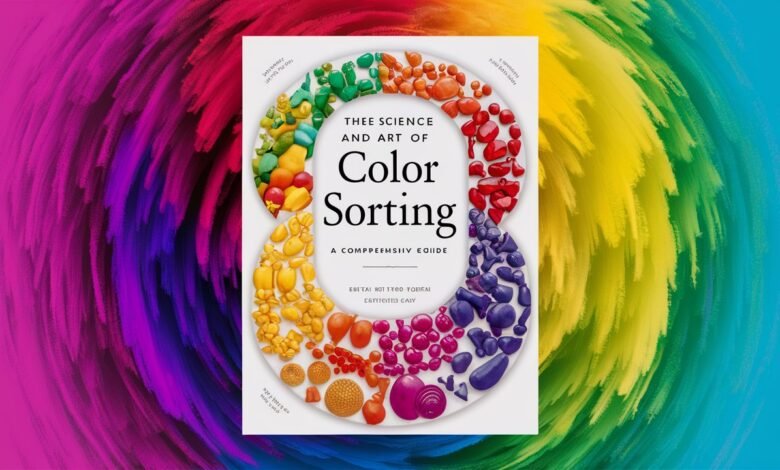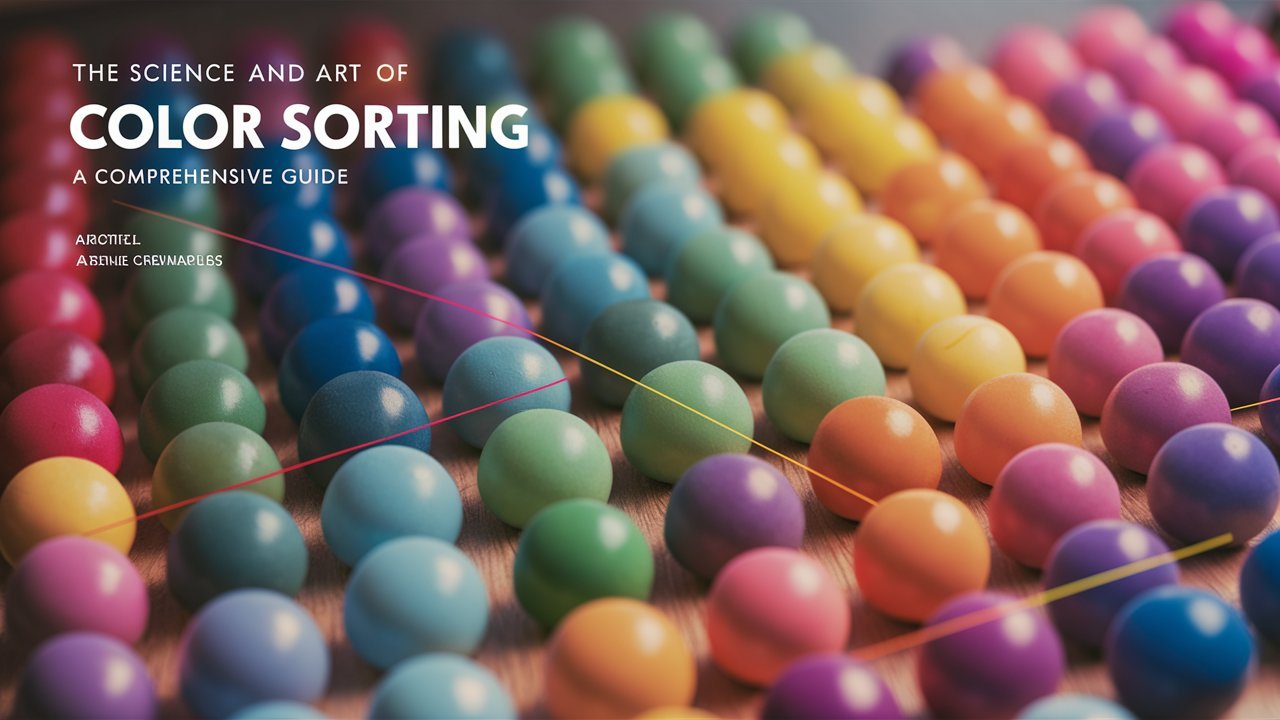The Science and Art of Color Sorting: A Comprehensive Guide

Introduction to Color Sorting
Color sorting is a critical process in industries ranging from food production to recycling, enabling the separation of materials based on their spectral properties. At its core, color sorting involves analyzing the wavelengths of light reflected or emitted by objects and categorizing them into predefined groups. This technology ensures consistency, quality, and efficiency in manufacturing and processing workflows. From eliminating defective grains in agriculture to sorting plastics for recycling, color sorting bridges the gap between human precision and automated scalability. This article delves into the principles, applications, and future trends of color sorting, offering insights into its transformative role in modern industry.
Understanding Color Sorting: Definition and Historical Context
Color sorting, also known as optical sorting, is a method that uses sensors, cameras, and algorithms to detect and separate items based on color differences. The concept dates back to the early 20th century, when manual sorting dominated industries like mining and agriculture. However, the advent of photoelectric sensors in the 1950s revolutionized the field, paving the way for automated systems. Today, advanced hyperspectral imaging and machine learning algorithms have elevated color sorting to new heights of accuracy. Understanding its evolution helps contextualize its current applications, such as in pharmaceuticals, where even minor color deviations can indicate contamination.
The Principles of Color Sorting Technology
Modern color sorting systems rely on three core components: light sources, sensors, and ejection mechanisms. Light sources (often LEDs or lasers) illuminate objects, while high-resolution cameras or spectrometers capture reflected light. Sophisticated software analyzes this data in real time, comparing it against predefined thresholds for acceptable colors. Items that deviate from these standards are ejected using air jets or mechanical arms. For example, in the food industry, a grain kernel with discoloration caused by mold is identified and removed within milliseconds. The precision of these systems hinges on advanced algorithms capable of distinguishing subtle shades, even in variable lighting conditions.
Applications of Color Sorting Across Industries
Color sorting’s versatility makes it indispensable in numerous sectors. In agriculture, it ensures only ripe, unblemished produce reaches consumers. Coffee beans, nuts, and rice are routinely sorted to remove impurities. In recycling, optical sorters separate plastics, glass, and metals by color, enabling efficient material recovery. The manufacturing sector uses color sorting to maintain product consistency—for instance, verifying the color accuracy of textiles or automotive parts. Even the pharmaceutical industry relies on it to detect mislabeled pills or contaminants. Each application underscores the technology’s role in enhancing safety, sustainability, and profitability.
Advancements in Color Sorting: AI and Hyperspectral Imaging
Recent innovations have transformed color sorting from a static process to a dynamic, adaptive system. Artificial intelligence (AI) enables machines to “learn” color patterns, improving accuracy over time. For instance, AI-powered sorters can adapt to seasonal variations in crop color without manual recalibration. Hyperspectral imaging goes beyond visible light, analyzing infrared or ultraviolet wavelengths to detect imperfections invisible to the human eye. This is particularly valuable in recycling, where differentiating black plastics—traditionally challenging due to their uniform appearance—is now possible. Such advancements are pushing the boundaries of what color sorting can achieve.
Benefits of Automated Color Sorting Systems
Automated color sorting offers unparalleled advantages. Increased efficiency reduces labor costs and processing time, while enhanced accuracy minimizes waste and improves product quality. In recycling, higher purity rates in sorted materials boost their market value. For food producers, color sorting enhances compliance with safety standards by removing contaminants. Additionally, these systems operate continuously without fatigue, ensuring consistent output. Companies investing in color sorting often see a rapid return on investment through reduced waste and improved customer satisfaction.

Challenges in Color Sorting Technology
Despite its benefits, color sorting faces challenges. Cost remains a barrier for small businesses, as high-end systems require significant upfront investment. Environmental factors, such as dust or humidity, can interfere with sensor accuracy, necessitating controlled operating conditions. Furthermore, sorting mixed materials with overlapping colors—such as multicolored plastics—requires advanced AI models that are still under development. Addressing these challenges will involve innovations in affordable hardware, robust sensor designs, and more intuitive software interfaces.
The Future of Color Sorting: Trends to Watch
The future of color sorting lies in integration with Industry 4.0 and the Internet of Things (IoT). Smart sorters will communicate with other machinery to optimize entire production lines in real time. Sustainability will also drive innovation, with systems designed to handle complex waste streams for circular economies. Additionally, portable color sorters could democratize the technology, allowing small farms or recycling centers to adopt it. As AI becomes more accessible, even niche industries will leverage color sorting to gain a competitive edge.
Frequently Asked Questions (FAQs) About Color Sorting
- What industries benefit most from color sorting?
Agriculture, recycling, manufacturing, and pharmaceuticals are primary beneficiaries. For example, food processors use it to remove defective items, while recyclers rely on it to separate materials like PET plastics. - How accurate are modern color sorting systems?
Advanced systems achieve up to 99.9% accuracy, depending on the application. Hyperspectral imaging and AI further reduce errors by detecting non-visible defects. - Can color sorting replace manual labor entirely?
While it significantly reduces reliance on manual sorting, human oversight is still needed for quality control and system maintenance. - What role does AI play in color sorting?
AI enables adaptive learning, allowing systems to improve accuracy over time and handle complex sorting tasks, such as distinguishing subtly different shades. - Are there eco-friendly benefits to color sorting?
Yes! By improving recycling efficiency and reducing waste, color sorting supports sustainability goals and reduces landfill dependence.
Conclusion: The Transformative Power of Color Sorting
Color sorting is more than a technical process—it’s a catalyst for innovation across industries. By combining cutting-edge technology with practical applications, it addresses critical challenges in quality control, sustainability, and efficiency. As advancements in AI and sensor technology continue, the scope of color sorting will expand, unlocking new possibilities for businesses and consumers alike. Whether ensuring the safety of food supplies or driving the circular economy, this technology exemplifies how science and ingenuity can transform everyday processes into engines of progress.
This comprehensive guide highlights the multifaceted role of color sorting, offering a roadmap for businesses and enthusiasts to harness its potential. From historical milestones to futuristic trends, the journey of color sorting is a testament to human creativity and technological evolution.



